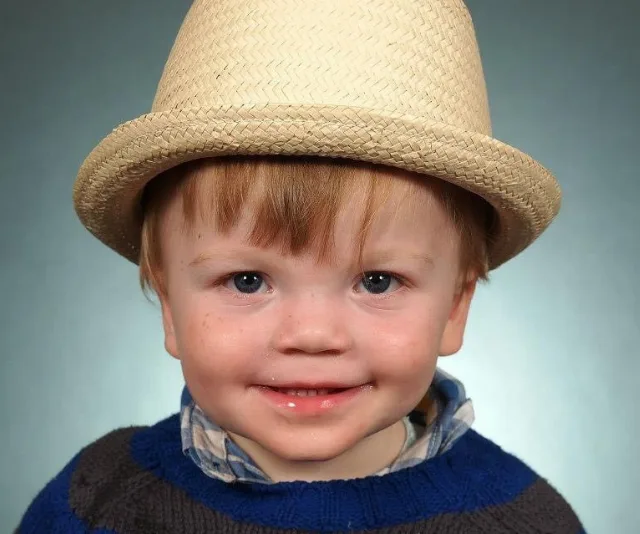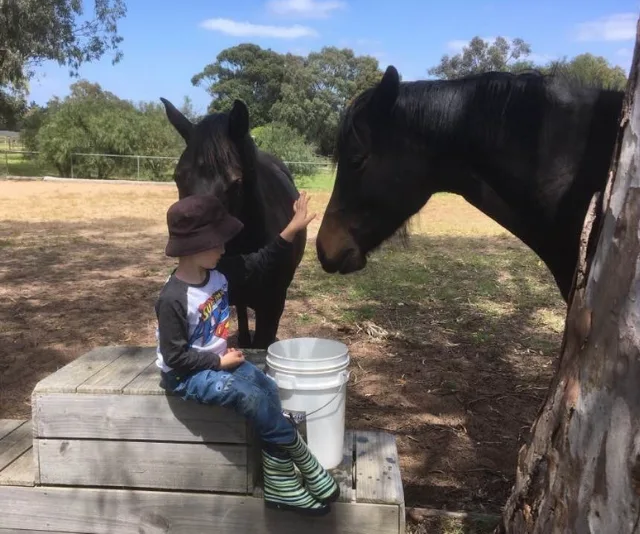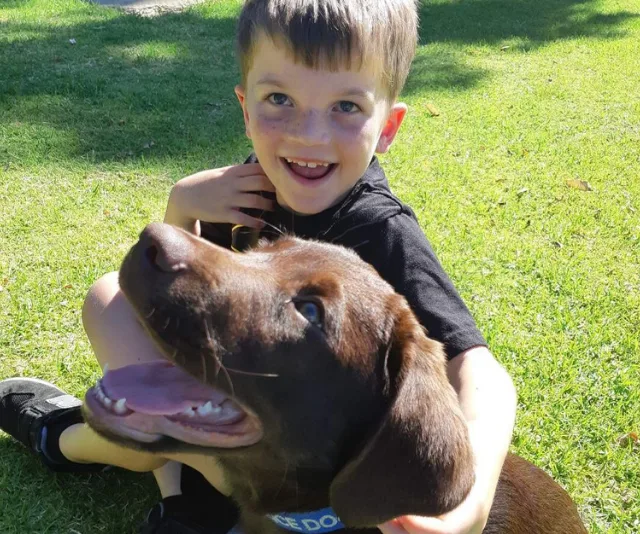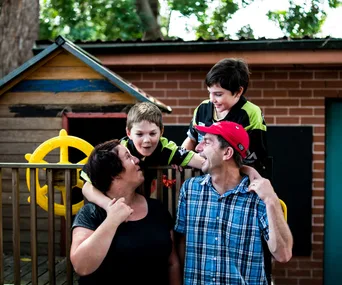Benjamin Williams was a tiny 22-month-old toddler when he fell to the floor and started convulsing in front of his terrified grandmother. A second seizure followed a few months later, leading the family on a stressful merry-go-round of medical appointments and invasive tests, which eventually resulted in a diagnosis of epilepsy.
Now aged seven, Ben’s seizure activity has reduced significantly thanks to medication and a variety of therapies, however seizures are still very much a part of the family’s daily life.

Ben two months prior to his diagnosis. Image: Supplied.
Ben’s mum Jodi, a nurse at Royal Perth Hospital, had an understanding of epilepsy through her nursing training, but never expected her own family to be affected.
“In the beginning Ben was having so many seizures, it just felt like a constant barrage on his little brain and body,” explains Jodi. “These days they’ve reduced a lot, and we’re down to just one or two tonic-clonic seizures a fortnight, and three to four absence seizures each day. That’s a massive improvement on the earlier days, although it’s still a lot for him to cope with.”
According to Epilepsy Action Australia, tonic-clonic seizures, where the person’s muscles stiffen then jerk uncontrollably, are what most people think of when they hear the word epilepsy. Absence seizures are much less dramatic, can often go unnoticed by other people, and are sometimes mistaken for daydreaming
“When Ben is having an absence seizure it’s like he’s zoned out for a few seconds – he might stare into space, or otherwise his eyes will stop tracking properly. Absence seizures don’t last long, but they have a really big impact on his attention and energy levels,” says Jodi.
“The tonic-clonic seizures are the ones we really worry about as he loses consciousness and his breathing can be affected. My greatest fear is that he’ll have a tonic clonic-during the night and won’t be able to come out of it. We have a motion sensor connected to his bed, but what if it misses one? Every morning a little piece of me is petrified of what I’m going to find when I go to wake him up.”

Ben participating in equine therapy. Image: Supplied.
As well as epilepsy, Ben has global development delay which impacts his speech and his fine and gross motor skill development, and further tests detected a rare chromosomal disorder called 22q11.21 duplication, which may explain many of his health concerns.
Ben also experiences generalised anxiety disorder and has lordosis which results in an increased curvature of his spine, for which he wears a special corrective suit each day. He undergoes a range of different therapies including speech therapy, occupational therapy, physiotherapy, and even equine therapy, which the family fits in around school and other commitments.
The Williams family have had more than their fair share of medical issues, with Benjamin’s dad Ian suffering two strokes in 2014 that affected his sight and resulted in cognitive impairment and Chronic Fatigue Syndrome. He is no longer able to work, leaving Jodi in the role of sole earner for the family as well as carer to both Ben and Ian.
WATCH: Seizure first aid for children. Continues after video …
They have set their sights on acquiring a medical assistance dog for Ben to alert his parents when a seizure occurs, and to assist him with his mobility and anxiety. After being denied funding for a dog through the NDIS, the family began raising money on their own. They’ve now raised enough to purchase the Labrador puppy – who they’ve named Radar – and commence training.
“Having the dog will relieve a huge amount of stress for us. As well as alerting us to his seizures, Radar will really help with Ben’s anxiety and sensory overload,” explains Jodi. “Radar will also be a bit of a sign for other people, to let them know that Ben might need some extra help. He’s such a smiley, happy kid, that often people don’t realise anything is wrong.”
Radar was born just before Christmas and the whole family is eagerly anticipating the day their new furry friend comes to live with them.

Ben getting to know a Labrador pup similar to the one he’ll be getting shortly. Image: Supplied.
Learn Seizure First Aid for Purple Day
March 26th each year is Purple Day, the international day for epilepsy awareness. This year the focus is on encouraging the Australian community to learn the basics of seizure first aid, so that they know what to do if someone has a seizure and needs help.
As a nurse, Jodi knows all too well the importance of seizure first aid and hopes people take this opportunity to be proactive and learn what to do if they see someone who may be having a seizure.
“Ben has actually never had a playdate at someone’s house because parents freak out about the idea that he may have a seizure,” she says.
“Some people are just so frightened about it because they don’t know what to do. Yes, witnessing a seizure can be scary, but learning what to do will actually take that fear out of the equation. And it’s not difficult to learn, even kids can learn seizure first aid.”
For more information about epilepsy, seizure first aid or to find out how to get involved in Purple Day visit Epilepsy Action Australia.
Written by Rachel McDougall.

